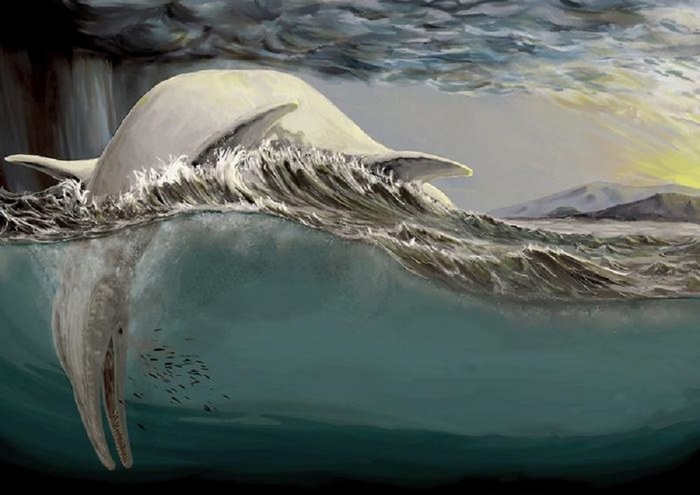07/28/2021 10:21 AM
Clarín.com
International
Updated 07/28/2021 11:02
The
impactor
that wiped out the dinosaurs likely came from the outer half of the main asteroid belt, a region thought to produce few impactors.
Researchers at the
Southwest Research Institute
in San Antonio, Texas, have shown that the processes that send large asteroids to Earth from that region occur at least 10 times more frequently than previously thought and that the composition of these bodies matches what we know about the impactor that kills dinosaurs, as posted in
Icarus
.
The team combined computer models of asteroid evolution with observations of known asteroids to investigate the frequency of so-called
Chicxulub
events
.
Image representing the moment of impact of the asteroid that ended the dinosaurs EFE / Chase Stone / Nature Research Press Site
More than 66 million years ago, a body estimated to be 9 kilometers in diameter struck in what is now Mexico's Yucatán Peninsula and formed the Chicxulub crater,
which is more than 130 kilometers in diameter
.
This
massive explosion
triggered an extinction event that
ended the reign of the dinosaurs
.
Over the past few decades, a lot has been learned about the Chicxulub event, but each advance has raised new questions.
"Two critical questions still unanswered are:
'What was the source of the impactor?
' And
'How often did such impact events occur on Earth in the past?
'" Explains co-author William Bottke in a statement.
To probe the Chicxulub impact, geologists have previously examined
66-million-year-old rock samples found on land
and within drill cores.
The results indicate that the impactor was similar to the carbonaceous chondrite class of meteorites, some of the most pristine materials in the solar system.
Interestingly, while carbonaceous chondrites are common among the many mile-wide bodies that approach Earth, today none are close to the sizes needed to produce the Chicxulub impact with any reasonable probability.
"We decided to find where the Chicxulub impactor's siblings might be hiding," said David Nesvorny, lead author of a paper describing the investigation.
Dinosaurs began their extinction 66 million years ago.
UNIVERSITY OF BRISTOL
"To explain its absence, several previous groups have simulated large ruptures of asteroids and comets in the inner solar system, observing waves of impacts on Earth, with the largest producing the Chicxulub crater," Bottke said.
"While many of these models had interesting properties, none provided a satisfactory match with what we know about asteroids and comets. It seemed that we were still missing something important."
To solve this problem, the team used computer models that track how objects escape the main asteroid belt, a zone of small bodies located between the orbits of
Mars
and Jupiter.
.
Over eons, thermal forces allow these objects to drift into dynamic "escape hatches" where gravitational 'kicks' from the planets can push them into near-Earth orbits.
Scientists want to know what happened after the impact of the asteroid that caused the extinction of the dinosaurs.
Using NASA's Pleaides supercomputer, the team followed 130,000 models of asteroids that evolved in this slow and steady way over hundreds of millions of years.
Particular attention was paid to asteroids located in the outer half of the asteroid belt, the part furthest from the Sun.
To their surprise, they found that 9-kilometer-wide asteroids from this region hit Earth at least 10 times more often than previously calculated.
Every 250 million years
"This result is intriguing not only because the outer half of the asteroid belt is home to a large number of carbonaceous chondrite impactors, but also because the team's simulations can, for the first time, reproduce the orbits of large asteroids about to approach the Earth, "said co-author Simone Marchi.
"Our explanation of the source of the Chicxulub impactor fits perfectly with what we already know about how asteroids evolve," he clarified.
Overall, the team found that 9-kilometer-wide asteroids
hit Earth once every 250 million years
on average, a timescale that yields reasonable odds that the Chicxulub crater occurred 66 million years ago.
In addition, almost half of the impacts were from carbonaceous chondrites, a good match with what is known from Chicxulub.
Europa Press
Look also
The mysteries of the Moon that NASA still cannot solve
New study claims early Earth was bombarded by city-sized asteroids








